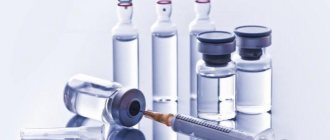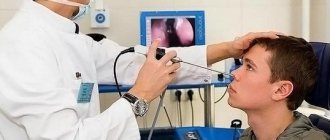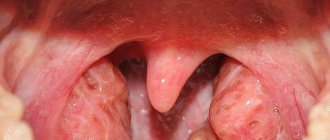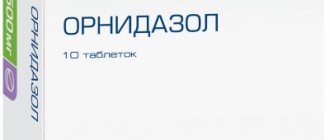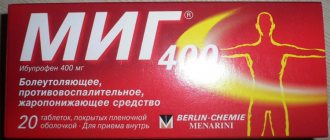The essence of Holter monitoring
Norman Holter is an American biophysicist, inventor of a specialized medical device that has become widely known throughout the world.
Holter monitoring is a research method that allows you to continuously record changes in the heart using an ECG. The process is carried out using a portable device (holter). In this way, all the features of cardiac function and blood pressure dynamics are recorded for 24 hours, all the time while the patient wearing the holter is in the activity phase.
Holter examination methods
There are two types of Holter monitoring, depending on how it is performed.
- Outpatient – the patient, being at home, freely performs his usual physical activity, without changing his lifestyle. Has high diagnostic value.
- In-hospital – performed in a hospital setting only when the patient is at high risk of developing a life-threatening condition. The value of the method is in the rapid response and relief of complications.
According to the recording duration, Holter monitoring is carried out over 16, 24, 48 hours. Some systems allow registration up to 7 days.
According to the scope of the examination, the Holter on the heart can be of the following types:
- ECG registration in 3 leads, 12 leads;
- ECG registration with additional measurements (blood pressure, respiratory rate).
Full-Scale Monitoring
A synonym for full-scale monitoring is 24-hour cardiac monitoring. A continuous recording of the electrocardiogram is made during the examination.
Fragmented monitoring
It is used when the symptoms of the disease are short-term, it is asymptomatic, or the time when heart failure occurs is infrequent and is not related to workload or sleep patterns. In such cases, the device automatically detects and records the required fragment of the pathological ECG, or the person being examined, by indicating in the Holter menu, notes a change in well-being and initiates an ECG recording.
Indications for the procedure
Monitoring heart function using Holtera is recommended in some cases.
To diagnose cardiac arrhythmias:
- Dizziness, fainting,
- uneven or rapid heartbeat,
- a history of myocardial infarction,
For the purpose of diagnosing ischemic myocardial disease:
- heart pain that is constant or episodic and occurs at rest or immediately after physical activity,
- pain and feeling of heaviness in the chest area,
- interruptions in breathing caused by physical activity or a stressful situation,
For the purpose of preventive monitoring of patients at risk of arrhythmia or ischemia:
- patients who have had a heart attack,
- people with heart defects,
- for diseases affecting myocardial function,
- in case of cardiomyopathy.
In case of existing organ failure:
- circulatory failure of 1-3 degrees, which has become chronic,
- renal failure.
Before surgery:
- heart surgery,
- surgical intervention in the functioning of other organs (the study is recommended for older people with problems with the functioning of the heart).
A Holter study can be prescribed for diseases of diabetes mellitus and the thyroid gland.
Holter ECG monitoring
Home / Diagnostic department / Functional diagnostics room / 24-hour ECG monitoring
Daily Holter ECG monitoring is an ECG recording during the day. A miniature cardiac recorder is attached to the belt, and electrodes are placed on the patient’s chest. The essence of the method is long-term recording of an ECG using a wearable portable device in conditions of free activity of the subject, followed by analysis of the resulting recording on special devices. A valuable non-invasive diagnostic method allows not only to accurately diagnose, but also to significantly increase the effectiveness of treatment of cardiovascular diseases. It is informative in the diagnosis of rhythm and conduction disorders of the heart, it is considered the method of choice at the initial stage of diagnosing coronary heart disease, and is used as a screening method in patients without angina pectoris, but with risk factors for coronary artery disease (hypertension, obesity, smoking, diabetes mellitus, etc.).
The official date of birth of this technique is 1961, when the American journal Science published an article by N. Holter “A new method for studying the heart.”
Preparation for 24-hour ECG monitoring (SMECG)
- Wear a cotton T-shirt (undershirt) and a watch on your hand. For men, if there is hair on the surface of the chest, shave off the hair or bring a razor.
- On the day of monitoring, you cannot talk on your cell phone.
- Bring with you an outpatient card, 2 new 1.5 V AA batteries Duracell or Energizer (buy in a store).
If you cannot come to the study on the appointed day, please notify us in advance by phone: 8 (495) 020-65-71
Holter monitoring is a widely used method of functional diagnostics.
For this purpose, a wearable portable recorder is used, which records an electrocardiogram around the clock and ensures the transfer of information about the work of the heart during the day to the computer. A special program provides identification and analysis of all types of heart rhythm disturbances, painful and painless attacks of myocardial ischemia. This method allows not only to make an accurate diagnosis, but also to significantly increase the effectiveness of treatment of cardiovascular diseases (hypertension, heart attack, atherosclerosis, myocarditis).
Indications for Holter monitoring:
- Complaints that may be a consequence of heart rhythm disturbances (palpitations, loss of consciousness, dizziness).
2. Assessing the risk of life-threatening arrhythmias in patients with the following diseases:
- hypertrophic cardiomyopathy.
- recent myocardial infarction complicated by heart failure or rhythm disturbances.
3. Detection of myocardial ischemia:
- if Prinzmetal's angina is suspected (characteristic chest pain and ECG changes in the early morning hours),
- after myocardial infarction, to determine further tactics for patient management,
- to assess the effectiveness of the treatment.
4. Long and short QT syndrome.
5. Assessing the effectiveness of antiarrhythmic treatment or the manifestation of antiarrhythmic effects. 6. Assessing the performance of the pacemaker in patients with complaints of palpitations. 7. Assessment of heart rate variability. 8. Detection of sick sinus syndrome (SSNS).
In all these cases, recording a regular ECG at rest may not reveal characteristic changes, so long-term recording is required.
Contraindications for the study
There are no absolute contraindications.
Relative contraindications are conditions under which the study is burdensome for the patient or technically impossible:
- Decompensation of cardiac, cerebral and respiratory activity.
- Feverish conditions with high body temperature.
- Allergic dermatitis of the anterior surface of the chest.
Holter monitoring (HM) work consists of 3 stages
- Installation of the recorder. Instructing the patient, explaining the purpose of the study and the rules of conduct during monitoring.
- Removing the recorder (usually after 24 hours),
- ECG monitoring analysis - performed by a doctor.
The recorder, worn by the patient, is a device that allows you to record the electrical activity of the heart during many hours (24 or 48 hours or more) of Holter monitoring.
Modern computer equipment must implement such CM elements as:
- long-term ECG recording under conditions of natural activity of the subject;
- playback of the recorded ECG;
- ECG analysis;
- processing and interpretation of results. Some systems are additionally equipped with programs for analyzing pacemaker function and late ventricular potentials.
With Holter monitoring, not only the ECG is assessed, but the doctor also has a description of the patient’s actions and complaints. It is very important to describe the symptoms during ECG changes in order to assess the correspondence between the objective picture and subjective manifestations.
During Holter monitoring, all patients must keep a diary in which you note your well-being, complaints, type of activity, physical activity, medication intake, time of wakefulness and sleep.
After installing the device, you are given a printed diary form, where you are asked to manually enter your actions and well-being at the appropriate hours of the day.
First of all, the occupation during the entire monitoring and physiological state are described: sleep, exercise, walking, running, driving, emotional stress.
Exactly in time, complaints are noted in connection with which monitoring and other subjective sensations are carried out: weakness, dizziness, chest tightness, suffocation, palpitations, malaise, pain in the heart area, or pain in another location.
You are asked to indicate the nature of the pain (dull, pressing, stabbing, squeezing, etc.), as well as its duration. It should be indicated under what circumstances the pain arose (after physical or emotional stress, at rest, etc.) and went away (stopping while walking, after taking medication). Indicate the time of administration and the name of medications.
When starting to analyze the results of Holter monitoring, the doctor enters the diary data into the computer. Therefore, keeping a diary is an extremely important aspect of conducting a quality survey and obtaining more accurate analysis results.
You can undergo Holter monitoring in the functional diagnostics department of our clinic.
Prices for services
Photo gallery
Branch phone: 8 (495) 020-65-71
Benefits of the study
Daily monitoring creates favorable conditions for tracking the following points:
- assessment of the functionality of the heart in a time period of 24 hours, without limiting the patient’s usual activity (the organ responds to emotional and physical influences),
- monitoring the state of the heart during sleep and rest,
- to understand the causes of fainting in the patient,
- detect and analyze all types of arrhythmias.
- identify episodes of ischemic myocardial disease,
- establish a reliable diagnosis, on the basis of which the appropriate medication for a particular patient will be prescribed and, as a result, increase the effectiveness of therapy for cardiovascular diseases.
Such monitoring allows not only to identify the fact of heart rhythm disturbances, but also to count the number of such episodes throughout the day, assess the degree of their intensity and duration over time.
The undeniable advantages of using a holter include:
- Reliability of the results obtained (ECG recording is carried out in 3 channels),
- Convenience (compact, lightweight device does not cause discomfort while wearing),
- It is allowed to lead a familiar, unconstrained lifestyle.
When is research needed?
Holter monitoring of the heart and blood pressure is necessary in cases where alarm signals indicate a disease, but the pathology does not yet have clinical symptoms and it is not possible to identify the cause using the standard approach. In addition to these cases, long-term recording of readings is necessary for many patients with cardiovascular pathologies.
Main advantages of the method:
- Recording myocardial parameters over a long period of time.
- Assessment of the work of the heart muscle under various types of load and at complete rest.
- Continuous cardiography monitors the slightest deviations, the manifestation of which cannot be recorded by standard methods.
Recommendations for monitoring
Despite the fact that Holter monitoring practically does not limit the patient’s freedom of movement and does not disrupt the rhythm of his usual life, for the reliability of the information it is worth following a few simple recommendations:
- It is forbidden to take water procedures (otherwise you can damage the device),
- the device must not be subject to mechanical damage or heat,
- loads that stimulate increased sweating are unacceptable (there is a risk of electrodes coming off),
- exclude the possibility of the patient being near transformer boxes or power lines,
- It is recommended to keep a diary of your well-being and activity during the specified period.
What not to do:
- carry out hygiene procedures at the place where the electrodes are attached;
- manipulate the recorder (for example, disassemble it);
- be near devices with strong electromagnetic radiation.
Having to constantly wear the recorder can cause some inconvenience. It is not very comfortable to perform active actions or sleep with him (the doctor may ask you to refrain from performing particularly active actions). Since the device, although small, can be noticeable under clothes in the summer, in order to avoid awkward situations, it is recommended to take a certificate from a medical institution about the study with you on a walk.
The main differences between ECG and Holter monitoring
Electrocardiography is a short recording of the heart's activity. The main condition for such a study is that the patient must be at rest. Recording time is 5-10 seconds. Holter ECG records disturbances in heart function over a period of 24 to 48 hours. During an ECG, about 40-50 heart beats can be recorded, and Holter indicators reach up to 100,000 beats in one day. The patient's motor activity remains unchanged. Drawing an analogy with a film, we can say that an electrocardiogram is just a “snapshot”, a “frame” of the process of heart functioning, while Holter monitoring is a full-length “film” about the heart, lasting 24 hours.
At the same time, Cholera monitoring cannot fully replace an ECG. These two medical procedures are considered necessary methods for diagnosing heart function, but they are radically different. And although they complement each other, they definitely do not replace each other.
Holter ECG is allowed to be combined with 24-hour blood pressure monitoring. In this case, detailed information will be obtained about the characteristics of the patient’s heart and the dynamics of his blood pressure.
Holter heart monitoring technique
When carrying out daily monitoring, the device that records the ECG is attached to the belt or chest using a special tape or belt. It is a small box smaller than a smartphone, from which wires extend to the electrodes. The latter are glued to the chest at certain points using adhesive tape. Thus, during the day there is a continuous recording and recording of data on the work of the heart into the device’s memory. During the monitoring process, the patient leads a normal rhythm of life without changing the regimen.
Possible inconveniences during the procedure
Wearing a Holter device may be associated with some temporary difficulties:
- inability to take a shower, bath (washing hands and areas not affected by electrodes is allowed),
- dimensions, weight, wires connected to the device and electrodes glued to the body can cause the patient some discomfort during physical activity or sleep,
- In today's troubled world, often prone to terrorist attacks, a person with many wires connected to his body can be considered a potential threat to society. In this case, the patient may have problems with law enforcement officers. In this regard, the patient may be issued a certificate about the safety of the device with a photograph attached to it.
What is required from the patient
In order for the daily cardiogram to be reliable, it is necessary to observe certain precautions during the procedure:
We advise you to read:Features of ECG in children
- It is prohibited to go through metal detectors in stores and other places;
- It is not recommended to use electric heating pads;
- you should refuse to carry out various types of physiotherapy for this period;
- overheating of the device or its hypothermia is not allowed, this will negatively affect the data obtained;
- It is strictly forbidden to wet the device;
- computed tomography or magnetic resonance imaging cannot be performed;
- Ultrasound is allowed only if it does not affect the chest area.
You can use computers and mobile phones; they do not affect the operation of the device. The patient must conscientiously keep a diary, not forgetting to record the necessary data in it. This attitude to the procedure will allow you to obtain accurate data, make a correct diagnosis, and select the optimal treatment option for a particular disease.
Preparation for the procedure
As a rule, no special preparatory actions are required from the patient, with the exception of one thing - the chest area must be clean, because the electrodes will be located on it. Therefore, men are recommended to first free their chests from hair, so as not to distort the results of the study. In public medical institutions, the queue for examination can last for weeks, for this reason it is better to sign up for the procedure in advance. They may also be required to purchase electrodes and batteries; as a rule, such inconveniences do not arise in private establishments.
Typically, the patient is recommended to give preference to loose-fitting clothing made from natural materials. It is better to refrain from wearing synthetic or woolen items during this period.
Rules for the patient
There are certain conditions under which the patient will successfully undergo Holter monitoring. What not to do when performing this type of research:
- Expose the equipment to hypothermia or overheating.
- Do not expose the device to moisture.
- Avoid vibrating surfaces, close proximity to electrical networks, microwave ovens, and transformer boxes.
- It is necessary to limit work on a computer or laptop to 3 hours a day. During use, the equipment must be at a distance of at least 30 cm from the halter.
- Do not lie down or sit on the device.
- If physical therapy or radiographic examination is prescribed, these procedures must be rescheduled for the period after completion of Holter monitoring.
- You cannot swim or shower.
- It is prohibited to engage in physical exercise or heavy work (with the exception of cases when there are instructions from a specialist to perform these actions).
The patient needs to monitor the position of the electrodes and ensure that they do not come off the skin throughout the entire observation period. During the monitoring period, it is necessary to wear clothes made from natural fabrics that fit tightly to the body. Synthetic fabric can give an additional static charge, and loose-fitting clothing can contribute to the electrodes coming off.
The appointment for the procedure is made by a cardiologist, who will subsequently interpret the Holter monitoring. The study can be carried out at any time; preparation for this type of diagnostic measures is not required. When starting research, it is necessary to obtain your doctor’s instructions regarding medications, clarify their discontinuation, or obtain permission to take standard medications.
Features of the study
The Holter monitoring technique is not particularly complicated. On the appointed day, the patient comes to see a specialist. Nurses place the device on his chest and attach the electrodes, after which he is given a diary recording events that occurred during the day (going up and down the stairs, going to the toilet, sleeping, etc.). In order to increase electrical conductivity, a special gel is used, and the electrodes (mostly disposable samples are used) are secured with adhesive tapes and adhesive rings. On average, the procedure lasts about a day.
Modern recorders are divided into 2 types: 3-channel and 12-channel; the device memory capacity can reach 200 MB. At its core, it includes a recorder and a decoder. The first shows and records data, the second plays the role of a computer with a block for entering the necessary data.
Preparation
Holter diagnostics does not require any preparation or special conditions for the procedure. There is one point that men with abundant hair need to fulfill. To ensure a tight fit of the electrode sensors, the hair must be shaved.
The specialist gives individual recommendations in each case. For example, increasing physical activity (climbing stairs) or eliminating vigorous activity. The general recommendation is to lead a normal lifestyle. After 24 hours, the patient returns to the clinic to obtain information and the device itself, or to obtain data with subsequent monitoring for an extended period.
Types of monitoring
At this stage, there are two types of Holter monitoring: fragmented and full-scale.
Fragment method
Indicated for use when arrhythmia and heart failure are of an irregular nature. For this reason, fragmented monitoring may take longer than in the case of a full-scale study. ECG recording can be carried out either continuously or episodically (at intervals at the time of the onset of painful sensations). If permanent fixation is necessary, the patient carries the device with him and presses the ECG recording button only during the period of symptoms.
For the purpose of event monitoring, a device can be used that has a convenient shape (in the form of a watch or a small device that can easily be placed in a pocket). If painful symptoms occur, the patient takes out the device and places it on the chest, after pressing the ECG recording button. In such situations, special metal disks act as electrodes.
Full scale method
Such a study lasts from 24 to 72 hours and is considered the most common method of Holter monitoring. Continuous recording of the ECG helps to obtain accurate information about the condition of the heart and the factors influencing the malfunction of the organ.
Keeping a patient diary
During the period of daily Holter ECG monitoring, the patient is required to keep a diary, where the necessary fields must be filled out in detail.
This document consists of two halves:
- Part A, where the patient indicates:
- Type of activity (sleep, walk, physical work, driving, stress).
- Signs of pathology (pain, heartbeat, shortness of breath, chest tightness, dizziness, sudden weakness).
- Time of medication use (name and dose).
- Hours of start and end of activity and complaints (from – to).
Example:
| Time | Occupation | Signs of the disease |
| 10:00-12:00 | Walk in the park | Chest pain |
- Part B (the patient fills out only for chest pain):
- Character (dull, pressing, stabbing).
- Time of occurrence (rest, work, stress, sleep).
- The intensity of pain decreases on its own (when), after stopping the load, taking nitrates.
Additionally, on the model of the torso, the patient indicates the localization of pain.
Research results
The data obtained during monitoring is assessed by a cardiologist. The latter carries out decoding based on electrocardiogram records. Additionally, the specialist carefully studies the diary, where the patient noted all his actions and characteristics of well-being.
The ECG transcript contains the following information:
- Information about heart rate (indicators are measured by the device),
- There have been malfunctions of the heart and pauses in its rhythm,
- Data on the dynamics of the intervals of the final part of the ventricular complex.
All information received can be provided in printed or electronic form.
Measured indicators:
- heart rate (normal values depend on age);
- the minimum and maximum heart rate during the measurement period, as well as the average heart rate;
- heart rhythm, rhythm data during ventricular and supraventricular extrasystoles, recording rhythm disturbances and pauses;
- dynamics of the PQ intervals (shows the time required for an impulse to propagate from the atria to the ventricles) and QT (the time it takes to restore the initial potential of the ventricles of the heart);
- information about changes: ST segment, QRS complex;
- recording the operation of a pacemaker, etc.
The study can be carried out against the background of concomitant diseases in patients of any age. Exceptions are acute inflammatory processes of the skin at the site of electrode attachment.
How much does the procedure cost?
The approximate cost of Holter monitoring ranges from 2 to 4 thousand and directly depends on the time of the study and the level of the institution in which the procedure is performed.
It is not for nothing that the Holter monitoring procedure is considered the most modern method of diagnosing the state of the heart, characterized by a high degree of efficiency. Simplicity and ease of use and the complete absence of contraindications make Holter monitoring one of the most popular diagnostic procedures.
Holter Holter ECG (Medicom). Training Installation of electrodes for Holter monitoring of 12-lead ECG
Where to go for research
Citizens of the Russian Federation have the opportunity to undergo Holter monitoring free of charge (if they have a compulsory medical insurance policy) in the following cases:
- As prescribed by the attending physician (generalist, cardiologist), if there is a suspicion of the development of any heart pathology.
- During an examination in a hospital, if specialists consider it necessary to obtain additional data about the patient’s health status.
- By referral from the antenatal clinic if an unfavorable course of pregnancy is suspected.
- Referred to by the medical commission of the military registration and enlistment office to assess the health of the conscript.
Free diagnostics are often associated with a number of difficulties - a long queue, broken equipment, etc. Patients in dire need of examination turn to private medical institutions, where a similar service is also provided, and the queue lasts no more than a week. Monitoring costs from 2 to 5 thousand rubles, which depends on the region, the status of the clinic and the type of recorder used.
Daily Holter diagnostics allows you to record an ECG without wasting time, but with maximum results, to identify the dynamics of blood pressure. Decoding data using software reveals the functioning of the autonomic nervous system, its effect on the functioning of the myocardium and heart rhythm disturbances. This study can provide a comprehensive picture of the pathology or become a platform for further research into the patient’s health, but in a clearly chosen direction.


